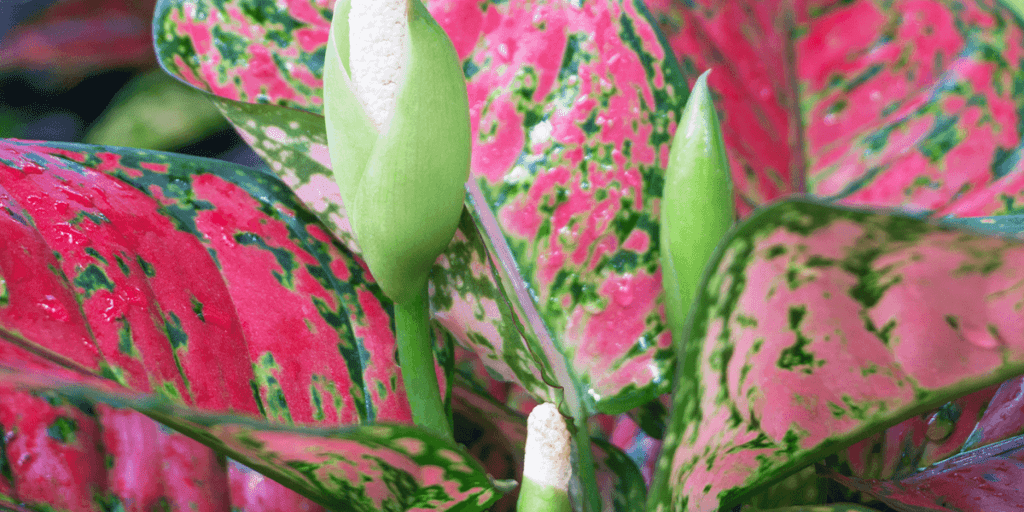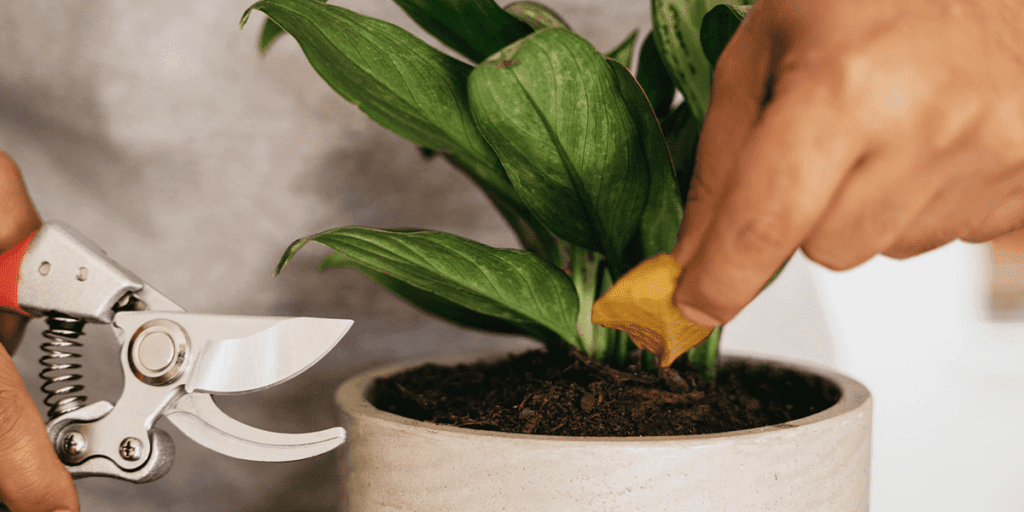Looking for an easy-to-grow plant with a pleasant personality? Chinese evergreens have long been celebrated as houseplants that bring good luck into your home. Here’s their full story on their symbolism and a guide to proper houseplant care!
The Symbolism of Chinese Evergreens
Chinese evergreens are tropical plants from Southeast Asia, valued as harbingers of good fortune and prosperity. Perhaps that’s because they live in a wise way: they grow slowly, aren’t too fussy, and live long into ripe old age. According to Feng Shui principles, they balance the water element in a room, which clears away stress. However you look at them, they’re good plants to have around and can teach us a few things as we move into the new year!

The Origin of their Botanical Name
The botanical name for this plant is Aglaonema. It comes from the Greek words, algos, meaning “shining,” and nema, meaning “thread.” This alludes to the beautiful shining leaves, which are their main attraction. Besides enhancing the beauty and wellbeing of our homes, they’re also easy to grow!
Light for Chinese Evergreens
Most Chinese evergreens thrive in medium to low light. The brighter and more variegated the leaves, the more light they need. The darker the leaves, the more shade they can tolerate. Darker varieties can even grow under fluorescent light conditions, like inside an office. But no variety can tolerate direct sun, as that will burn their delicate leaves.
How Much Water Do Chinese Evergreens Need?
Chinese evergreens like the soil to remain moist, but, like so many other houseplants, they don’t like to be waterlogged. Once the top 2 inches of soil are dry, it’s time to take out the watering can. Water slowly around the plant until you see water drain out of the bottom.
Temperature for Chinese Evergreens
Like so many other tropical plants, Chinese evergreens don’t like the thermostat swinging below 65 degrees Fahrenheit. It makes sense, as in their native jungle habitat, they’d never experience a sudden cold draft. So take care to keep them away from open doors and windows.
Do Chinese Evergreens Need Humidity?
Some growers say that Chinese evergreens are greenhouse plants, since they need a lot of humidity. But they’ll thrive in your home just fine. If you see brown tips on the leaves, that’s a sign they need more humidity. Keeping them in a moist place like a bathroom or kitchen takes care of the problem. Otherwise, you can set the pot above a shallow tray with pebbles and water, or group it together with other plants to increase the humidity.
What Kind of Soil Do Chinese Evergreens Need?
Chinese evergreens like a well-draining potting mix. If you find the soil is not draining well enough, mix in some sand or perlite. As these plants are slow growers, you’ll only have to repot them every couple of years.
How Much Fertilizer?
Fertilizing twice in the year—once in the spring, and again in the summer—is enough to keep this plant healthy and strong.

Common Troubleshooting for Chinese Evergreens
- Drooping leaves: This is primarily a sign of lack of moisture in the soil, but if moisture levels are good, it indicates a lack of light.
- Drooping lower leaves: This is a normal part of the plant’s growth. You can prune away these older leaves around the base as they die off.
- Curly leaves: Means too much light, or too much direct light.
- Crispy, yellow leaves: Indicates not enough water.
- Yellow and brown leaves: Is a sign of too much water. The cause may be compacted or poorly draining soil. It could also be a sign of insufficient light, since a plant without enough light cannot use up the water it receives.
- Yellow or brown stems: A sign of root rot. To solve the problem, lift the plant out of the soil, remove all of the infected roots, and repot it in fresh, well-draining soil.
Visit our garden centers in Bloomingdale and Carpentersville to see our full selection of houseplants!
Platt Hill Nursery is Chicago’s premier garden center and nursery.


